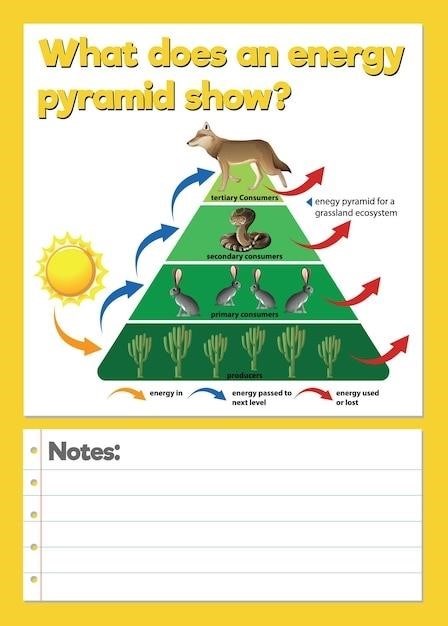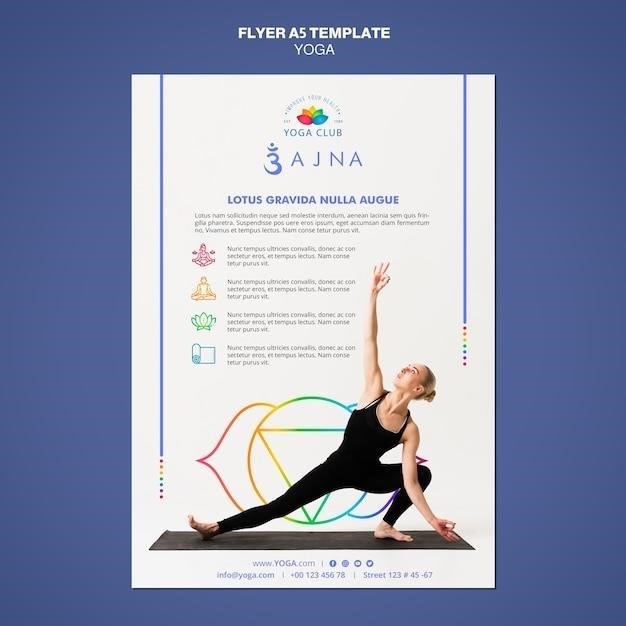
polyvagal theory exercises pdf
Polyvagal Theory Exercises⁚ A Guide to Regulation and Wellbeing
This article introduces the polyvagal theory and some of its challenges and offers exercises and resources to support its use by mental health practitioners with their clients. .;. we thought you might like to download our three Stress amp; Burnout Prevention Exercises (PDF) for free. These science-based exercises will equip you and those you work …
Introduction to Polyvagal Theory
Polyvagal Theory, developed by Dr. Stephen Porges, offers a groundbreaking understanding of the autonomic nervous system and its profound impact on our emotional, social, and physical well-being; This theory, rooted in neuroscience, proposes that the vagus nerve, a crucial component of the autonomic nervous system, plays a central role in regulating our responses to stress, trauma, and social interaction; The vagus nerve, often referred to as the “wandering nerve,” extends from the brainstem to various organs throughout the body, including the heart, lungs, and digestive system.
Polyvagal Theory highlights the intricate connection between our nervous system and our ability to experience a sense of safety, connection, and regulation. It posits that our nervous system operates in a hierarchical manner, with different states of arousal influencing our behaviors and emotional responses. This theory provides a framework for understanding how our nervous system adapts to different environments and experiences, ultimately shaping our overall well-being.
Polyvagal Theory has gained significant recognition in various fields, including mental health, trauma therapy, and even education. Its insights have revolutionized our understanding of how stress, trauma, and social interaction can impact our physiology and behavior. By understanding the principles of Polyvagal Theory, individuals can gain valuable tools for self-regulation, promoting a sense of calm, connection, and resilience in the face of life’s challenges.
Understanding the Vagus Nerve and its Role in Regulation
The vagus nerve, a vital component of the autonomic nervous system, acts as a communication highway between the brain and the body. It plays a crucial role in regulating various bodily functions, including heart rate, digestion, breathing, and even our emotional responses. The vagus nerve, aptly named “wanderer,” extends from the brainstem, located at the base of the skull, to various organs throughout the body, branching out to the lungs, heart, diaphragm, stomach, and even reaching the ears and eyes.
Within the vagus nerve, two pathways are particularly relevant to Polyvagal Theory⁚ the ventral vagal pathway and the dorsal vagal pathway. The ventral vagal pathway is associated with a sense of safety, calm, and connection. When this pathway is activated, we experience feelings of relaxation, social engagement, and a regulated state of being. On the other hand, the dorsal vagal pathway is associated with a sense of shutdown, freeze, or dissociation. When this pathway is activated, we may experience feelings of numbness, detachment, and a withdrawal from the environment.
Polyvagal Theory emphasizes the interplay between these two pathways and their influence on our emotional and physiological responses. By understanding how the vagus nerve functions, we can gain insight into how our nervous system regulates our responses to stress, trauma, and social interaction. This knowledge empowers us to develop strategies for promoting a sense of safety, connection, and overall well-being.

The Polyvagal Ladder⁚ A Framework for Understanding Autonomic States
The Polyvagal Ladder, a framework developed by Deb Dana based on Stephen Porges’ Polyvagal Theory, offers a visual representation of our autonomic nervous system’s response to stress and safety. This ladder, with three distinct rungs, illustrates the different states our nervous system can occupy, each influencing our emotional and physical responses. The bottom rung represents the “dorsal vagal” state, characterized by shutdown, freeze, or dissociation. This state is often triggered by intense stress, trauma, or overwhelming situations, leading to feelings of numbness, detachment, and a sense of being overwhelmed.
The middle rung, known as the “sympathetic” state, is associated with the fight-or-flight response. Here, our body prepares for action, experiencing heightened alertness, increased heart rate, and muscle tension. While this state is adaptive in emergency situations, prolonged activation can lead to anxiety, irritability, and a sense of being on edge.
The top rung of the Polyvagal Ladder represents the “ventral vagal” state, a state of safety, connection, and social engagement. This is where we feel calm, relaxed, and able to connect with others. When in this state, our heart rate is regulated, our breath is even, and we feel grounded and present. The Polyvagal Ladder provides a valuable tool for understanding how our nervous system responds to different situations and helps us identify strategies for navigating these states to promote greater regulation and well-being.
Polyvagal Theory Exercises for Self-Regulation
Polyvagal Theory exercises offer a powerful toolkit for enhancing self-regulation and promoting a sense of safety and connection. These practices aim to stimulate the vagus nerve, the longest cranial nerve in the body, which plays a crucial role in regulating our autonomic nervous system. By activating the vagus nerve, we can shift our state from stress and dysregulation to a state of calm, grounded presence.
These exercises are designed to be incorporated into daily life, providing a sense of agency and control over our emotional and physiological responses. They are not a quick fix but rather a mindful approach to cultivating a more regulated nervous system. These exercises can be used independently or in conjunction with other therapeutic interventions, offering a holistic approach to well-being.
The beauty of Polyvagal Theory exercises lies in their accessibility and versatility. They can be practiced anywhere, anytime, making them ideal for managing stress, anxiety, and other challenges that arise in our busy lives.
Breathing Exercises⁚ Cultivating Calm and Connection
Breathing exercises are a cornerstone of Polyvagal Theory, serving as a direct pathway to calming the nervous system and fostering a sense of safety and connection. By consciously regulating our breath, we can influence the vagus nerve, promoting a shift towards a more regulated state. The vagus nerve, which extends from the brainstem to the abdomen, plays a vital role in regulating our heart rate, digestion, and emotional responses. When we engage in intentional breathing practices, we stimulate this nerve, promoting a sense of calm and well-being.
One effective technique is diaphragmatic breathing, also known as belly breathing. By focusing on expanding the abdomen with each inhale and gently contracting it with each exhale, we activate the vagus nerve and encourage a slower, more rhythmic breathing pattern. This technique helps to reduce the stress response, promoting relaxation and a sense of grounding.
Another powerful breathing technique is box breathing, which involves inhaling for a specific count, holding the breath, exhaling for the same count, and holding again. This rhythmic breathing pattern helps to regulate the nervous system and create a sense of focus and control. By incorporating these exercises into daily routines, we can cultivate a greater sense of calm and presence, enhancing our capacity to navigate stress and emotional challenges.
Body-Based Exercises⁚ Engaging the Vagus Nerve
Beyond breathing exercises, incorporating body-based practices into our self-regulation toolkit can further enhance our ability to engage the vagus nerve and promote a sense of safety and calm. These practices often involve physical actions that stimulate the vagus nerve, promoting a shift towards a more regulated state. One effective technique is gentle physical touch, such as self-massage or acupressure, which can activate the vagus nerve and induce a sense of relaxation and grounding.
Another approach is to engage in activities that involve rhythmic movement, such as walking, yoga, or gentle stretching. These activities can help to regulate the nervous system by promoting a sense of flow and coordination, while also stimulating the vagus nerve.
Incorporating these body-based exercises into our daily routines can help us to cultivate a greater sense of self-awareness and embodiment, enhancing our ability to navigate stress and promote a sense of well-being. By engaging in these practices, we can foster a more balanced and regulated nervous system, supporting our overall emotional and physical health.
Social Engagement and Co-Regulation
Polyvagal theory emphasizes the profound impact of social connection on our nervous system regulation. Co-regulation, the process of influencing and being influenced by another person’s nervous system, plays a crucial role in promoting a sense of safety and well-being. When we engage in meaningful social interactions, our vagus nerve is stimulated, fostering a sense of calm and connection. This is particularly relevant in situations where we feel overwhelmed or stressed.
Engaging in activities that involve shared laughter, conversation, or physical touch can help to activate the vagus nerve and promote co-regulation. These activities can help us to feel more connected to others and create a sense of safety and belonging.
By recognizing the importance of social connection and co-regulation, we can create opportunities to foster these interactions in our lives. Whether it’s spending time with loved ones, joining a support group, or simply engaging in a friendly conversation, these activities can have a profound impact on our nervous system and promote a sense of well-being.
Resources for Further Exploration
The world of polyvagal theory is rich and constantly evolving, offering a wealth of resources for those seeking deeper understanding and practical application. To further your exploration, consider delving into the following avenues⁚
- Books⁚ Deb Dana’s works, such as “The Polyvagal Theory in Therapy⁚ Engaging the Rhythm of Regulation” and “Polyvagal Exercises for Safety and Connection,” are highly recommended for therapists and individuals seeking practical guidance. Stephen Porges’ “The Pocket Guide to the Polyvagal Theory⁚ The New Science of Advancing Mental, Physical, and Social Health” offers a concise overview.
- Websites and Organizations⁚ The Polyvagal Institute, founded by Dr; Stephen Porges, provides a comprehensive platform for learning, resources, and community support. Sensory Health offers articles, videos, and infographics for a basic understanding of the theory.
- Online Courses⁚ Several platforms offer online courses on polyvagal theory, providing in-depth knowledge and practical exercises. The Polyvagal Institute, for example, offers online training programs for professionals.
- Podcasts⁚ Podcasts like “The Polyvagal Podcast” and “The Trauma Therapist Podcast” offer insightful interviews and discussions on the theory and its applications.
Remember, the journey of understanding and applying polyvagal theory is ongoing. Embrace the resources available, engage in ongoing learning, and experience the transformative power of this powerful framework for promoting well-being.